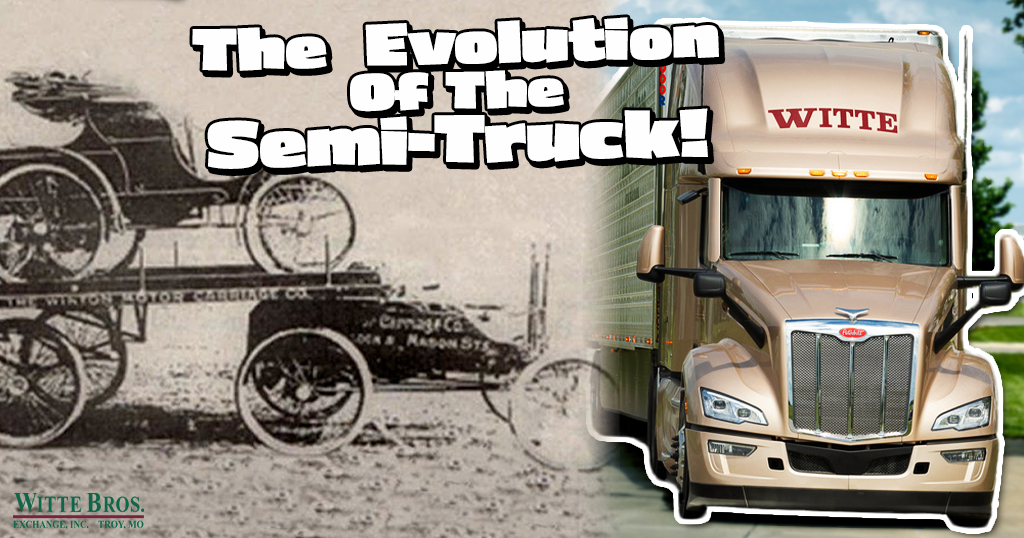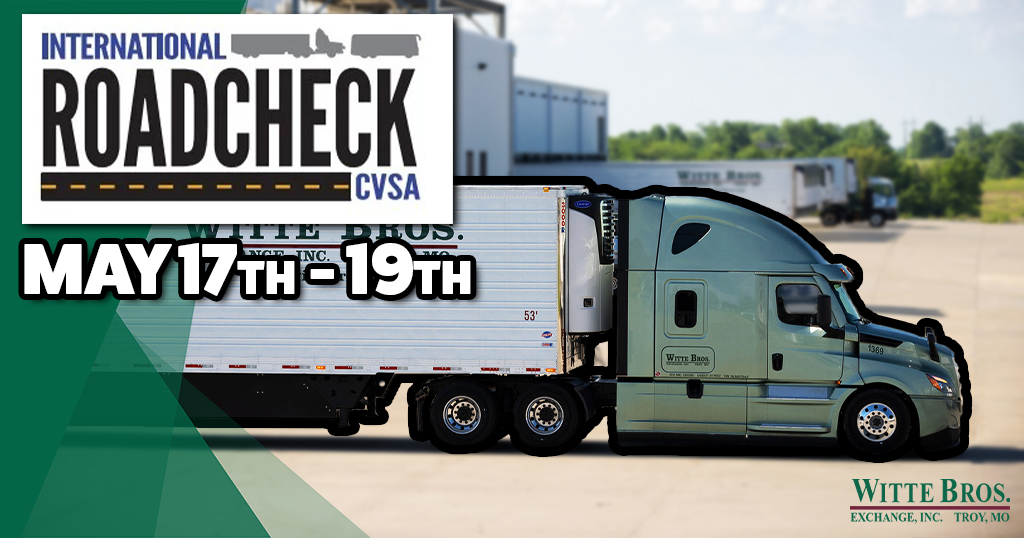Tractor trailers, also known as semi-trucks, semi-trailer trucks and 18-wheelers, are responsible for transporting over 70 percent of the goods and commodities in the United States. Tractor trailers are typically an 18 wheeled truck that includes the truck (the tractor) and the trailer. The tractor trailer has changed a lot since it’s conception and we have laid out some of that history below!
The First Tractor-Trailer:
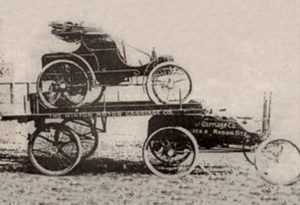 Alexander Winton, in Cleveland Ohio, invented the tractor trailer in 1898 and sold his first manufactured tractor trailer in 1899. The Winton Motor Carriage Company of Cleveland manufactured and sold their first 22 cars in 1898 and these cars needed to be delivered to their buyers, and this caused him to invent the concept of the tractor trailer to help with the delivery of his vehicles to avoid the miles of wear and tear required to drive them to his customers.
Alexander Winton, in Cleveland Ohio, invented the tractor trailer in 1898 and sold his first manufactured tractor trailer in 1899. The Winton Motor Carriage Company of Cleveland manufactured and sold their first 22 cars in 1898 and these cars needed to be delivered to their buyers, and this caused him to invent the concept of the tractor trailer to help with the delivery of his vehicles to avoid the miles of wear and tear required to drive them to his customers.
The first semi-truck, which Winton called an Automobile Hauler, used a modified short-wheeled touring automobile (the tractor) with a cart (the trailer) attached to the back of it. The platform sat on top the engine portion and rested on a pair of wheels on the other end. Most cars and trucks have engines in the front, but this car had its engine in the back. The platform on this tractor trailer could only hold one vehicle. Winton did not pursue the design of his first semi-truck, but others continued to expand on the concept.
Expanding On The Concept:
 August Charles Fruehauf, a Detroit blacksmith, built a carriage for someone who wanted to transport his boat in 1914 and he officially called the carriage a semi-trailer. It was a big success, and he went on to develop the carriage for many other uses, like hauling lumber. In 1918 he incorporated the Fruehauf Trailer Company, which is still a leading maker of semi-trailers today.
August Charles Fruehauf, a Detroit blacksmith, built a carriage for someone who wanted to transport his boat in 1914 and he officially called the carriage a semi-trailer. It was a big success, and he went on to develop the carriage for many other uses, like hauling lumber. In 1918 he incorporated the Fruehauf Trailer Company, which is still a leading maker of semi-trailers today.
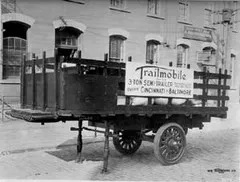 John C. Endebrock had experience building horse carriages and used his knowledge to develop what he call the “Trailmobile”. It was an iron chassis that was mounted on wheels and springs that could be trailed behind a Ford Model T. It was designed so that it would be possible for a single person to hook the trailer to the car, earlier trailers needed three people to hook up chassis to the car.
John C. Endebrock had experience building horse carriages and used his knowledge to develop what he call the “Trailmobile”. It was an iron chassis that was mounted on wheels and springs that could be trailed behind a Ford Model T. It was designed so that it would be possible for a single person to hook the trailer to the car, earlier trailers needed three people to hook up chassis to the car.
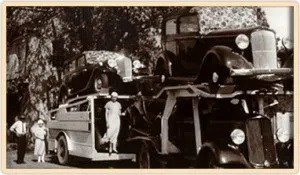 In the 1930’s, George Cassens was responsible for taking the vehicle hauling business to the next big step in it’s evolution. Cassens attempted to ship the new cars directly to the buyers and realized the shipment cost were extremely high for the car manufactures. Cassens saw an opportunity and offered to haul the cars from the manufacturing site to the car owners with his four-car auto trailer that was pulled with a two-ton Dodge truck.
In the 1930’s, George Cassens was responsible for taking the vehicle hauling business to the next big step in it’s evolution. Cassens attempted to ship the new cars directly to the buyers and realized the shipment cost were extremely high for the car manufactures. Cassens saw an opportunity and offered to haul the cars from the manufacturing site to the car owners with his four-car auto trailer that was pulled with a two-ton Dodge truck.
Mack:
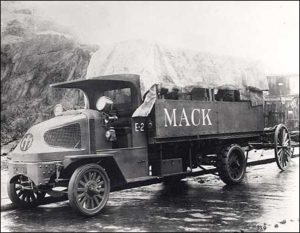
Mack Trucks were one of the first innovators of heavy-duty commercial vehicles. Mack was founded in 1900 and developed and manufactured its own engines that made use of an automatic starter, which made the hand-crank obsolete. From 1929 to 1944, Mack produced 2,601 semi or full truck trailers and became known for building tough and durable trucks.
Peterbilt:
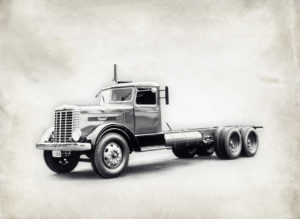 The logging industry had an impact on the popularity of the semi-truck. Peterbilt, a truck company, started selling its semi-trucks in 1939 and were used exclusively to haul logs from the forest to the lumber mills. T.A. Peterman, founder of Peterbilt, refurbished army trucks and equipped them with trailers specifically to haul logs.
The logging industry had an impact on the popularity of the semi-truck. Peterbilt, a truck company, started selling its semi-trucks in 1939 and were used exclusively to haul logs from the forest to the lumber mills. T.A. Peterman, founder of Peterbilt, refurbished army trucks and equipped them with trailers specifically to haul logs.
Freightliner:
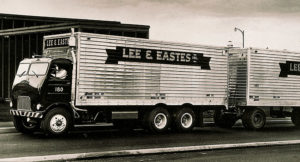 Freightliner was founded in 1929 under the name Freightways Manufacturing as a company division to Consolidated Freightways to produce semi-trucks for company use. Freightways Manufacturing used Fageol trucks as a starting point for the design, putting the cab, the area inside the truck where the driver is seated, above the front axel of the trailer. The new truck being shorter in length allowed for the use of longer trailer. And in 1942 Freightways Manufacturing was renamed to Freightliner Corporation and as a part of their relaunch they released the first truck with an all-aluminum cab.
Freightliner was founded in 1929 under the name Freightways Manufacturing as a company division to Consolidated Freightways to produce semi-trucks for company use. Freightways Manufacturing used Fageol trucks as a starting point for the design, putting the cab, the area inside the truck where the driver is seated, above the front axel of the trailer. The new truck being shorter in length allowed for the use of longer trailer. And in 1942 Freightways Manufacturing was renamed to Freightliner Corporation and as a part of their relaunch they released the first truck with an all-aluminum cab.
Over the past 100 years, the two wheeled semi-trailer that Winton invented to haul a single car has turned into the eighteen wheeled tractor trailer with three axels that we know today. Tractor trailers now transport 10.23 billion tons of freight in the United States, which is about 72.5% of the nation’s freight. All of this is possible due to the evolution of Winton’s two wheeled semi-trailer.

